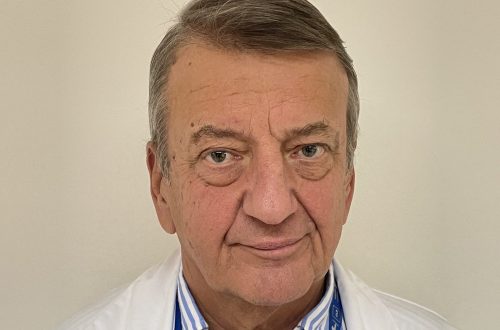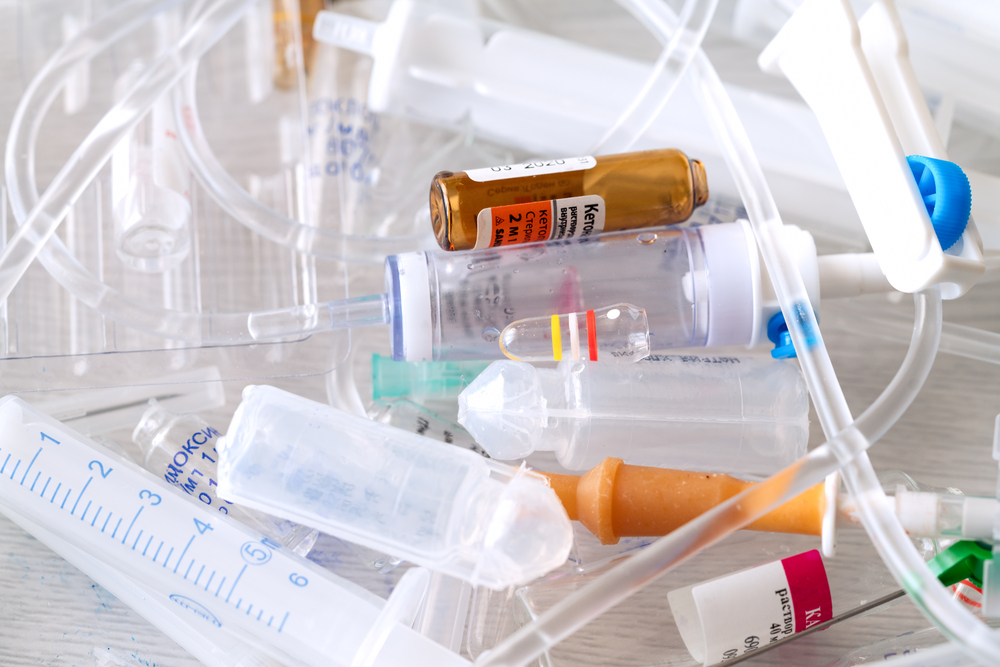Congress Newsletter 2023
Empowering Anaesthesiologists: Dr Andrea Kollmann Camaiora's Journey with ESAIC, e-Learning, and the Future of Medical Education
Dr Andrea Kollmann Camaiora (SE)
Chair of the ESAIC eLearning Committee,
Coordinator for obstetric anesthesia, Akademiska Sjukhuset, Uppsala, Sweden
Your extensive involvement as both a member and chair of an ESAIC committee showcases a remarkable journey. What motivated you to actively engage with ESAIC, and how has your experience shaped your personal and professional growth?
My residency at La Paz University Hospital in Madrid, Spain, was a fortunate opportunity where I had the privilege of meeting exceptional anaesthesiologists who served as mentors and inspired me to strive for excellence. Among them, Prof. Gilsanz, an honorary member of the ESAIC, Estibaliz Alsina, who has been involved in examinations and education since before the ESAIC was formed, and Nicolas Brogly, with his extensive experience in the examinations committee, motivated me to follow in their footsteps. Their guidance fuelled my enthusiasm to actively engage with the ESAIC.
Over the years, I have participated in numerous ESAIC activities, such as masterclasses, the trainee exchange programme, and the teach-the-teacher course. I have also served as an examiner and contributed to the creation of the BCSAC committee. Currently, as the chair of the e-Learning committee, I have gained a comprehensive understanding of the ESAIC organisation and its capabilities.
What are your predictions or statements regarding the future of ESAIC and its potential impact on scientific and medical education?
Looking ahead, I believe the ESAIC holds tremendous potential to impact scientific and medical education. Through its educational initiatives, the ESAIC has the power to positively influence anaesthesiologists worldwide, providing them with top-quality information based on the latest scientific evidence. It is of utmost importance to me and my committee that we present users with unbiased, up-to-date, and high-quality information.
As the Chair of the e-learning Committee, you faced the challenge, yet opportunity, presented by the COVID-19 pandemic. e-Education suddenly became the sole means of delivering education in recent years, and you have done an outstanding job in revitalising the Academy, introducing new formats, and attracting a broader audience. Could you share more about your journey in this regard?
As the Chair of the e-Learning Committee, I encountered the challenge and opportunity presented by the COVID-19 pandemic. With the sudden shift to e-education as the primary mode of delivering knowledge, I took on the task of revitalising the Academy and introducing new formats to attract a broader audience. Despite the challenges we faced, such as adapting the academy and activity formats and finding speakers, our main concern was determining the future of e-Learning once the pandemic subsided. To address this, we conducted an Educational Needs Assessment Survey in June 2021, which yielded encouraging results. Ninety percent of anaesthesiologists expressed their desire to continue e-Learning after COVID, encompassing various modalities such as webinars, podcasts, social media education, and microlearning activities. The survey also indicated a wide range of preferred topics, excluding COVID-related content due to fatigue.
Over the past three years, we have made significant updates to the Academy and the app, making them more user-friendly. We have actively worked on recruiting female speakers and hosts, ensuring a diverse range of topics including obstetrics, intensive care medicine, patient safety, and the climate effects of anaesthesia. Furthermore, next year the academy will introduce a new search engine with a tagging system to facilitate easy access to information.
Are there any upcoming new formats that will be launched in the coming year?
Regarding upcoming formats, we are excited to launch the “Theme of the Month” on Brain Health next October. Additionally, in the coming months, we will publish two new on-demand activities: one focusing on guidelines and another featuring interactive quizzes to test anaesthesiologists’ knowledge on intriguing topics. I encourage all ESAIC members to visit the Academy and take advantage of the diverse educational activities it has to offer.
What are you most excited about for this year’s Euroanaesthesia Congress? Is there a particular aspect, session, or opportunity that you are looking forward to the most?
As for the Euroanaesthesia Congress, I am particularly eager to attend a lecture titled “With Regard to Obstetric Anaesthesia, I Strongly Believe…” chaired by Emilia Guasch. This session will challenge various dogmas in obstetrics with active participation from the audience. I am also excited to listen to two residents from my department present their posters on obstetric anaesthesia. Moreover, the opportunity to network and meet colleagues from all over the world is always a highlight of the European congress.
In conclusion, Dr Andrea Kollmann Camaiora’s journey with ESAIC and her leadership in the e-Learning Committee have been instrumental in advancing medical education in anaesthesiology. Her dedication and passion have shaped the future of ESAIC, ensuring the delivery of high-quality and accessible educational content.
We extend our heartfelt gratitude to Dr Kollmann Camaiora for her exceptional contributions to the field and her commitment to empowering anaesthesiologists worldwide. Her efforts have made a significant impact on the growth and success of ESAIC, inspiring the next generation of medical professionals.
Dr Andrea Kollmann Camaiora is the Chair of the ESAIC eLearning Committee and Coordinator for obstetric anaesthesia in Uppsala, Sweden. Her commitment to ESAIC and her leadership in eLearning has revolutionised medical education.
We met with Dr Andrea Kollmann Camaiora during Euroanaesthesia 2023, where she was awarded the FESAIC – a prestigious honour awarded to healthcare professionals who have made a significant contribution to anaesthesiology and intensive care. Being granted the title of FESAIC signifies an exceptional level of dedication and contribution to the European Society of Anaesthesiology and Intensive Care (ESAIC). It serves as concrete evidence of one’s remarkable service to the Society and patients, encompassing areas such as Congress participation, research endeavours, educational contributions, and advocacy efforts. Within the anaesthesiology and intensive care community, the FESAIC title is widely recognised as a symbol of unparalleled achievement and distinction. We wish Dr Kollmann Camaiora much of success in the future!










